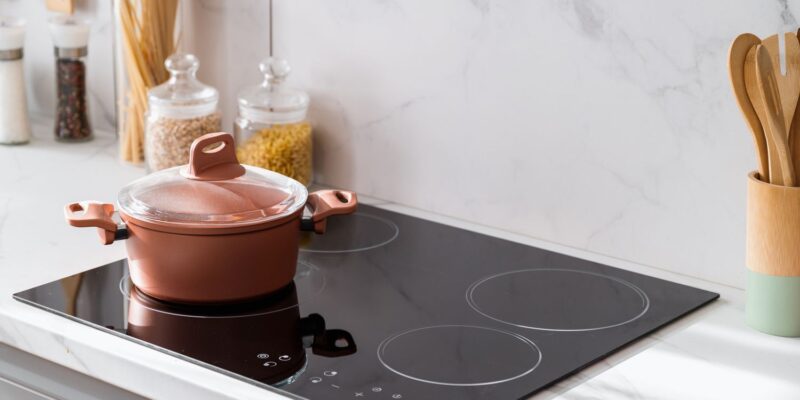
Where energy conservation and sustainability are becoming priorities, our homes are adapting. From lighting and cooling systems to everyday kitchen appliances, people are making smarter choices to reduce power consumption.
Among these innovations, the induction cooktop stands out as one of the most efficient and eco-friendly cooking solutions for modern Indian homes. It not only saves electricity but also makes cooking faster, safer, and cleaner.
Let’s understand how induction cooktops are transforming kitchens into energy-saving spaces.
What is an Induction Cooktop
An induction cooktop is a modern cooking appliance that uses electromagnetic energy to heat cookware directly, instead of heating the surface or surrounding air. Unlike gas stoves that use flames or traditional electric stoves that heat coils, an induction cooktop transfers energy directly to the pot or pan, ensuring minimal energy loss.
The process is simple yet highly efficient. When you place a compatible cooking vessel on the induction surface, a magnetic field generates heat within the metal of the cookware itself. This means the food cooks faster, and the cooktop remains relatively cool to the touch.
Since it doesn’t rely on open flames or radiant heat, an induction cooktop is not only energy-efficient but also safer to use, especially in homes with children or elderly members. It also helps maintain a cooler kitchen environment, which can be a huge relief during hot Indian summers.
Compact, sleek, and portable, induction cooktops have become an essential part of modern kitchen appliances, offering both efficiency and elegance in one design.
Supporting Energy-Saving Homes with Induction Cooktops
Energy-saving homes are built on the idea of reducing unnecessary power consumption while maintaining comfort and convenience. The induction cooktop fits perfectly into this vision by minimising energy waste, optimising heat transfer, and enabling faster cooking. Let’s see how it contributes to sustainable living in everyday use.
Reduced Electricity Usage
One of the biggest advantages of an induction cooktop is its energy efficiency. Unlike traditional stoves or coil-based electric cookers that lose a lot of heat to the surrounding air, induction technology directs nearly all the energy to the cookware.
Studies show that induction cooktops can convert over 85–90% of electricity into usable cooking heat, compared to around 60–70% in regular electric stoves and even lower in gas stoves. This means less energy is wasted, and your meals are ready faster.
In Indian households where electricity bills and fuel costs are major concerns, this can make a noticeable difference over time. Since it heats only the pot or pan, not the entire surface, it uses just the right amount of power for each dish.
Smarter Temperature Control
Induction cooktops offer better temperature control than traditional stoves. Most models come with digital settings or touch controls that allow you to adjust heat levels instantly. This not only ensures perfect cooking results but also helps in saving energy.
For instance, when you cook on a gas stove, the flame often continues to burn even after the dish is done. But with an induction cooktop, once you switch it off, the heat stops immediately. There’s no residual energy loss, and no chance of overcooking or burning food.
Moreover, the even heat distribution prevents wastage caused by reheating or cooking unevenly cooked food again. Over time, such efficiency adds up to significant energy savings in your kitchen.
This level of precision also means you can cook a variety of dishes. It can be slow-cooked curries or quick stir-fries, all without adjusting the flame manually. The energy you use directly supports the cooking process, not anything else. That’s what makes it an ideal choice for energy-conscious households.
Faster Meal Preparation
For busy Indian families, time is often as valuable as energy. An induction cooktop heats up almost instantly, cutting down cooking time by a large margin. The electromagnetic process transfers heat directly to the cookware, which makes water boil, oil heat, and food cook much faster than on a gas stove.
This not only saves electricity but also makes cooking more efficient. The faster your food cooks, the less time the appliance consumes power. For example, something that takes 15 minutes on a regular gas stove may take only 8–10 minutes on an induction cooktop.
It’s especially helpful for people juggling work and household chores, students, or those living alone who prefer quick, no-fuss meals. With pre-set cooking options, many induction cooktops let you cook rice, curry, or roti at the touch of a button, ensuring convenience without compromising on energy efficiency.
Additionally, because the surface doesn’t get very hot, cleaning is easier. There’s no residue or burnt marks to scrub off. This means less maintenance and a longer lifespan for your kitchen appliance, contributing to overall sustainability.
Smarter Living Through Smarter Cooking
An induction cooktop is much more than just another modern cooking appliance; it’s a step toward a smarter, energy-conscious lifestyle. It perfectly supports the needs of Indian homes that want to balance comfort with sustainability.
For conserving resources, even small changes in our kitchens can make a big impact. Switching to energy-efficient kitchen appliances like induction cooktops helps reduce your carbon footprint while keeping your daily cooking routine smooth and modern.
Whether you’re setting up a new home, upgrading your old stove, or simply looking to save on energy bills, an induction cooktop is a practical investment. It represents the best of both worlds: technology that saves energy and convenience that makes home cooking a true pleasure.











